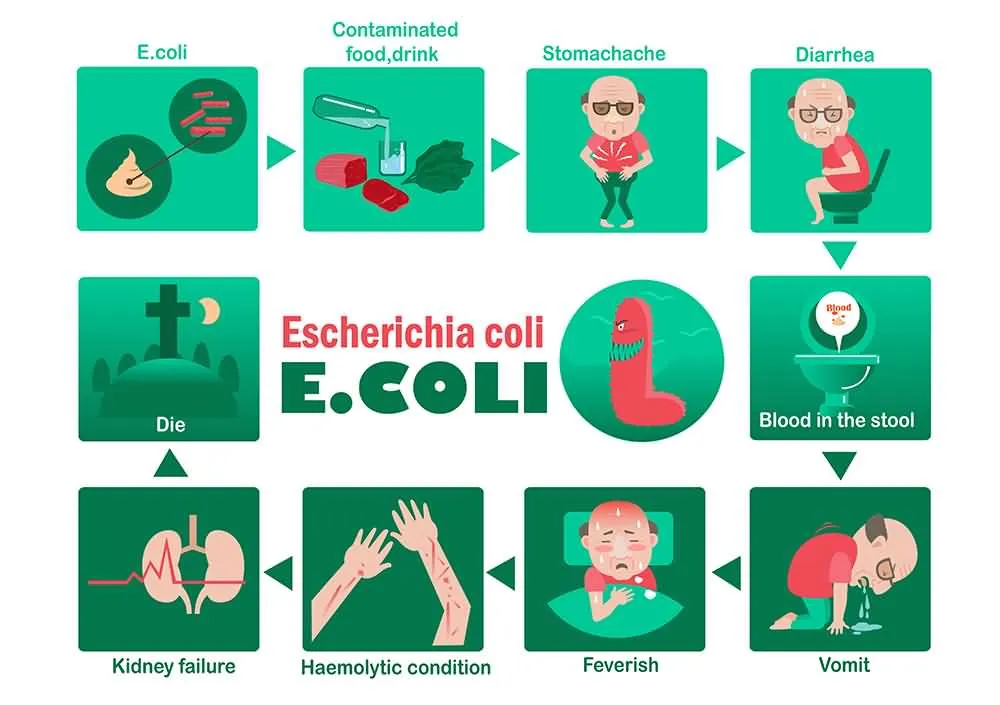14. Neonate fever

Newborns with E. coli meningitis often have fever as one of the leading symptoms along with jaundice. This symptom is also found in babies one month and 4 months old. It is caused by an inflammatory reaction against the bacteria in the central nervous system with the upcoming activation of the temperature centers in the brain. It is a leading sign, but it is not meaningful by itself because it may be caused by an infection in almost any other part of the body. Thus, it is important to look over the rest of the signs and symptoms to get a clear picture of what is happening. This is why neonates with jaundice or fever are maintained under critical care for a long time until their symptoms have finally improved.

There are still other infections associated with E. coli, such as bacteremia and pneumonia. When diagnosing a disease that might be caused by E. coli, doctors need to rule out many different differential diagnoses. In the gastrointestinal tract, for example, it is important to rule out infection by Enterobacter, Proteus, Klebsiella, Pseudomonas, Rotavirus, and even V. cholerae and amebiasis. These infections should be treated with antibiotics, but also require supportive care, which means maintaining the patient hydrated, with constant blood pressure, and sometimes may even involve dialysis, as we have reviewed above.
Certain strains of E. coli might cause an abscess, which always depends on the site of the infection. When that is the case, patients may require a surgical debridement to reduce their risks. It is also important to take care of the patient’s nutrition, especially after an episode of acute diarrhea.
As you can see, there’s no easy way to deal with an E. coli infection. There are two many types of infection, many subtypes of E. coli to take in consideration, and sometimes therapy will require urgent medical attention and even hospitalization. Therefore, do not delay your diagnosis if you think there’s a possible infection with the symptoms we have mentioned throughout this article.
References
DuPont, H. L. (2006). Travellers’ diarrhoea: contemporary approaches to therapy and prevention. Drugs, 66(3), 303-314.
Dozois, C. M., & Curtiss, R. (1999). Pathogenic diversity of Escherichia coli and the emergence of’exotic’islands in the gene stream. Veterinary research, 30(2-3), 157-179.
Slavchev, G., Pisareva, E., & Markova, N. (2009). Virulence of uropathogenic Escherichia coli. Journal of culture collections, 6(1), 3-9.
Siitonen, A. (1994). What makes Escherichia coli pathogenic?.
Harrington, S. M., Dudley, E. G., & Nataro, J. P. (2006). Pathogenesis of enteroaggregative Escherichia coli infection. FEMS microbiology letters, 254(1), 12-18.
Harvey, D., Holt, D. E., & Bedford, H. (1999, June). Bacterial meningitis in the newborn: a prospective study of mortality and morbidity. In Seminars in perinatology (Vol. 23, No. 3, pp. 218-225). WB Saunders.


